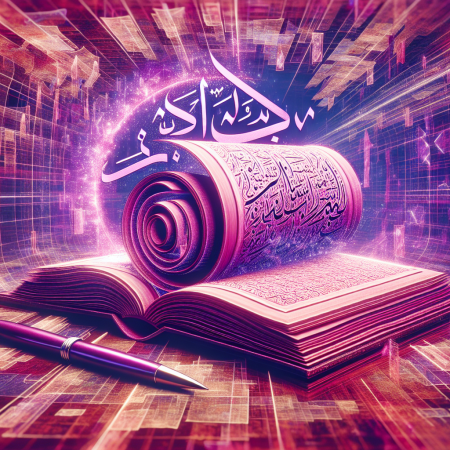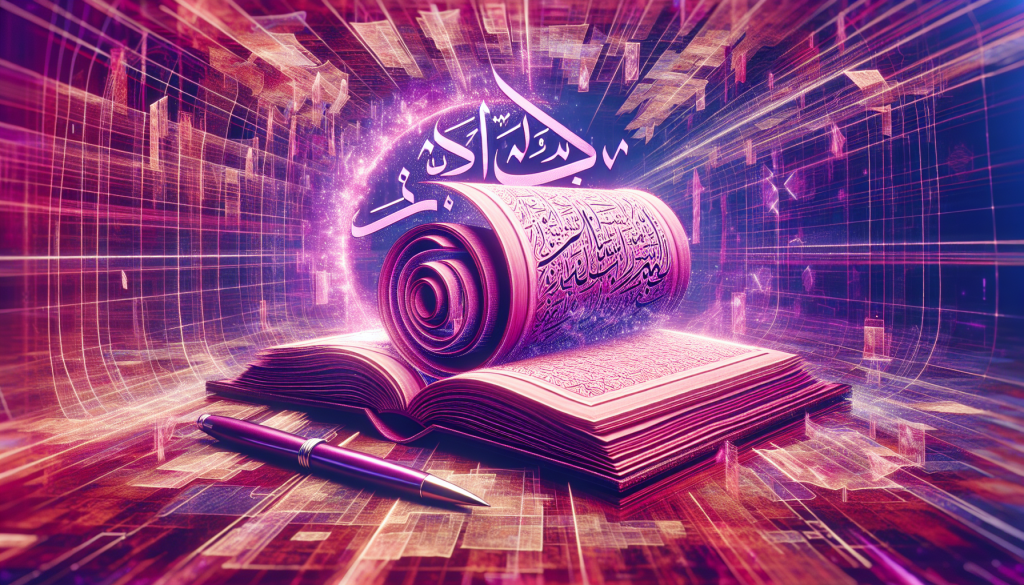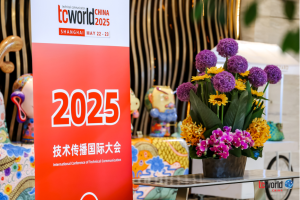Understanding Arabic to English Translation
The process of translating from Arabic to English is a complex task that requires not just linguistic proficiency but also a deep understanding of cultural contexts.
The Importance of Arabic Translation
Arabic is the fifth most widely spoken language in the world and serves as the official language in 26 countries (Source). This makes Arabic to English translation an essential service for various sectors including education, business, tourism, and medical institutions. The demand for arabic to english language translation has been on the rise due to an increasingly interconnected global community. Whether it's for document translation, legal translation, or audio translation, the need for accurate and culturally sensitive translation services is more important than ever.
Challenges in Arabic to English Translation
Despite its importance, Arabic to English translation is not without its challenges. The two languages have significant differences in grammar, sentence structure, and vocabulary, which can pose unique challenges for translators, particularly in capturing the nuances and cultural context of the original text.
Arabic has a rich history and cultural context, which can affect the meaning and interpretation of words and phrases. This makes the translation process more nuanced and complex. For instance, a single Arabic word may have multiple meanings depending on its usage and context, making the process of translating such words into English quite challenging.
Additionally, Arabic is written from right to left, a direction opposite to that of English. This introduces another layer of complexity for translators, especially when dealing with documents and texts that include numbers and dates.
Accurate arabic to english translation requires a deep understanding of both languages, their cultural nuances, and context, as well as a mastery of translation techniques and tools (Smartling). It's more than simply converting words from one language to another; it's about conveying the same meaning and sentiment of the original text.
For professional and accurate Arabic to English translation services, individuals and organizations can consult with a skilled arabic to english translator or use a trusted arabic to english online translation service. The right translation service can help bridge the communication gap and ensure accurate and culturally sensitive translations.
The Intricacies of Arabic Language
Understanding the complexities of the Arabic language is crucial in the process of Arabic to English language translation. These intricacies lie not only in the vocabulary and sentence structure of the language but also in its elaborate grammar rules.
Arabic Vocabulary and Sentence Structure
Arabic boasts a rich literary tradition and a plethora of classical and modern texts. Its vocabulary is extensive and diverse, which adds depth and richness to the language but also presents challenges when translating it into English.
The sentence structure in Arabic also significantly differs from English. In Arabic, the typical sentence structure is verb-subject-object, while English follows a subject-verb-object order. This fundamental difference in sentence structure can pose unique challenges for translators, particularly in capturing the nuances and cultural context of the original text.
Moreover, Arabic has six individual phonemes not found in the English language, making Arabic to English translation more difficult. English speakers often find it hard to vocalize Arabic sounds due to the different ways these sounds are produced. For example, Arabic has eight vowel phonemes and 28 consonant phonemes, while English has 22 vowel phonemes and 24 consonant phonemes (Day Translations).
Arabic Grammar and its Complexity
Arabic grammar is known for its complexity. It includes a system of verb conjugation and noun declension, which can be challenging to accurately translate into English. The use of gender, plural forms, and verb tenses in Arabic is vastly different from English, adding another layer of complexity to the translation process.
Furthermore, Arabic has a rich history and cultural context, which can affect the meaning and interpretation of words and phrases. This makes translation more nuanced and complex, as translators need to understand the cultural significance and historical contexts to accurately convey the message in English.
Understanding these intricate elements of the Arabic language is crucial for achieving accurate and meaningful Arabic to English translation. It is these complexities that highlight the importance of utilizing professional Arabic to English translator services. These professionals are well-versed in the nuances of both languages and can ensure that the translated text retains its original meaning and context.
The Role of Cultural Context in Translation
In the realm of Arabic to English language translation, it's crucial to acknowledge that the task goes beyond just translating words from one language to another. A comprehensive understanding of cultural nuances is vital to ensure the true meaning of the text is effectively conveyed.
Importance of Cultural Understanding
Arabic has a rich history and cultural context, affecting the meaning and interpretation of words and phrases, rendering translation more nuanced and complex. This is not unique to Arabic but applies to all languages where cultural idioms, expressions, and historical references play a significant part in conveying a message accurately.
As such, the translation process demands a deep understanding of both languages, their cultural nuances, and context, as well as a mastery of translation techniques and tools (Smartling). This understanding allows the translator to grasp the intended meaning and translate it effectively to the target language.
For instance, consider the case of idioms, culturally specific phrases whose meanings cannot be inferred from the literal meanings of the words. A direct translation of an idiomatic phrase might not make sense in the target language. Therefore, an understanding of these phrases in context, including their cultural significance, is necessary for accurate translation.
Navigating Cultural Nuances in Arabic
Arabic is written the way it is verbalized, and its grammar structure is systematic with minimal exceptions. It differentiates between females and males in its sentence structure, words, verbs, and pronouns (Day Translations). This gender differentiation is one of the many cultural nuances inherent in the Arabic language that can pose a challenge for translators.
Moreover, Arabic to English translation can be challenging due to the significant differences between the two languages in terms of grammar, vocabulary, and sentence structure. In addition, Arabic is a highly inflected language with a complex verb system, which adds to the difficulty of translation.
Human translators with expertise in both Arabic and English are essential for accurate and high-quality translations. They have a deep understanding of the cultural nuances and idiomatic expressions in both languages, allowing them to convey the intended meaning effectively (source).
Ultimately, understanding the role of cultural context in translation underscores the need for professional translation services. These services can ensure that the nuances of the source language, in this case Arabic, are accurately captured in the target language. To learn more about Arabic to English translation services, visit Maxsun Translation.
The Translation Process
The translation process involves a series of steps to ensure that the original message is accurately and effectively conveyed in the target language. This is particularly significant in Arabic to English language translation, given the complexity and cultural richness of the Arabic language.
Human Translation Versus Machine Translation
In the digital age, automatic translation tools are readily available and can provide a basic understanding of a text. However, these tools often fail to capture the nuances and complexities of the Arabic language, resulting in inaccurate translations. Machine translation technologies have advanced in recent years, but they still struggle with accurate translation of Arabic to English, particularly due to the complex linguistic and cultural nuances of the Arabic language (Source).
On the other hand, human translators with expertise in both Arabic and English are essential for accurate and high-quality translations. They have a deep understanding of the cultural nuances and idiomatic expressions in both languages, allowing them to convey the intended meaning effectively.
In the context of Arabic to English translation, the choice between human and machine translation can significantly impact the quality and accuracy of the final output. For critical documents or professional purposes, it's recommended to utilize professional Arabic to English translation services to ensure precision.
Ensuring Accuracy in Translation
Ensuring accuracy in translation is crucial, especially when working with complex languages like Arabic. This involves not just literal translation of words, but also capturing the context, cultural nuances, and idiomatic expressions inherent in the language.
To ensure accuracy in translation, it's important to employ several strategies. First, using a professional Arabic to English translator with a deep understanding of both languages can help ensure that the translation accurately conveys the intended meaning. Second, proofreading and editing the translated text can help identify and correct potential errors or inconsistencies. Finally, using specialized translation tools and software can assist in maintaining consistency and accuracy throughout the translation process.
Despite the potential challenges, accurate Arabic to English language translation is achievable with the right expertise and resources. Whether it's document translation, legal translation, or certified translation, the key lies in understanding the unique intricacies of the Arabic language, coupled with an in-depth knowledge of English and the cultural context of both languages.
The Demand for Arabic to English Translation
In today's globalized world, the need for effective communication across languages and cultures is more important than ever. This includes the demand for Arabic to English translations, which is driven by factors such as globalization, immigration, and the need for communication in various sectors such as business, education, and government.
Increasing Need for Translation Services
The demand for Arabic to English language translation is on the rise. This need is fuelled by various forces, including the increasing global interconnectedness, migration patterns, and the necessity for effective communication across different fields such as business, education, and government (Smartling).
From business contracts to educational materials, legal documents to tourism brochures, the realms needing Arabic to English translations are vast and varied. This increasing demand underscores the importance of accurate and culturally sensitive translation services that can bridge the gap between Arabic and English speaking individuals and entities. For more on the importance and challenges of Arabic to English translation, refer to our comprehensive guide on arabic to english translation.
Utilizing Professional Translation Services
Professional translators with expertise in both Arabic and English are in high demand to ensure accurate and culturally appropriate translations. These professionals are particularly crucial when dealing with sensitive materials and documents, where precision and cultural sensitivity are paramount.
Language service providers and translation agencies play a crucial role in facilitating Arabic to English language translation. They connect clients with qualified translators and implement quality control measures to ensure the accuracy and appropriateness of translations. These agencies provide a range of services, from arabic to english audio translation, arabic to english document translation, to arabic to english certified translation and more.
In conclusion, the growing need for Arabic to English translation services highlights the importance of employing professional translation services to ensure precision, cultural appropriateness, and effective communication across language barriers.
The Art of Translation
The process of translation, particularly Arabic to English language translation, is not a straightforward task of replacing words from one language to another. Rather, it's an art form that requires a deep understanding of both the source and target languages, as well as sensitivity towards cultural nuances.
Understanding the Target Language
The first step in the art of translation is developing a deep understanding of the target language. An effective Arabic to English translator needs to grasp not only the basic vocabulary and sentence structure of English but also its intricate grammatical rules. This understanding allows for the translation of text in a fluent and flexible way, while simplicity is recommended if the structure is not known. A nuanced understanding of the target language also ensures that the translated text maintains its original meaning while appealing to the cultural and linguistic sensibilities of the English-speaking audience.
Translating Beyond Words: Context and Meaning
Translating successfully from Arabic to English involves more than simply converting words. It's about fully appreciating the context in which words are used and conveying the intended meaning in a way that resonates with English-speaking audiences. The meaning of certain Arabic words or phrases can vary considerably depending on the context in which they are used. Therefore, a translator needs to consider the surrounding text to ensure the correct interpretation (source).
Moreover, due to the lack of equivalent words and concepts between Arabic and English, translators often need to find innovative ways to express ideas and concepts in English. This might involve using metaphors, idioms, or other linguistic devices to accurately convey the intended meaning (Write Liff).
The art of translation, especially when it comes to Arabic to English language translation, is a complex and nuanced process. It involves not only linguistic expertise but also cultural sensitivity and creative problem-solving skills. For those seeking professional translation services, you can find more information about our Arabic to English translation services on our website.




![[Regulatory Update] Egypt Imposes New Certification Rules for Manual Translations [Regulatory Update] Egypt Imposes New Certification Rules for Manual Translations](https://maxsuntranslation.com/wp-content/uploads/2025/06/Egypt-Imposes-New-Certification-Rules-for-Manual-Translations-1-300x109.png)

